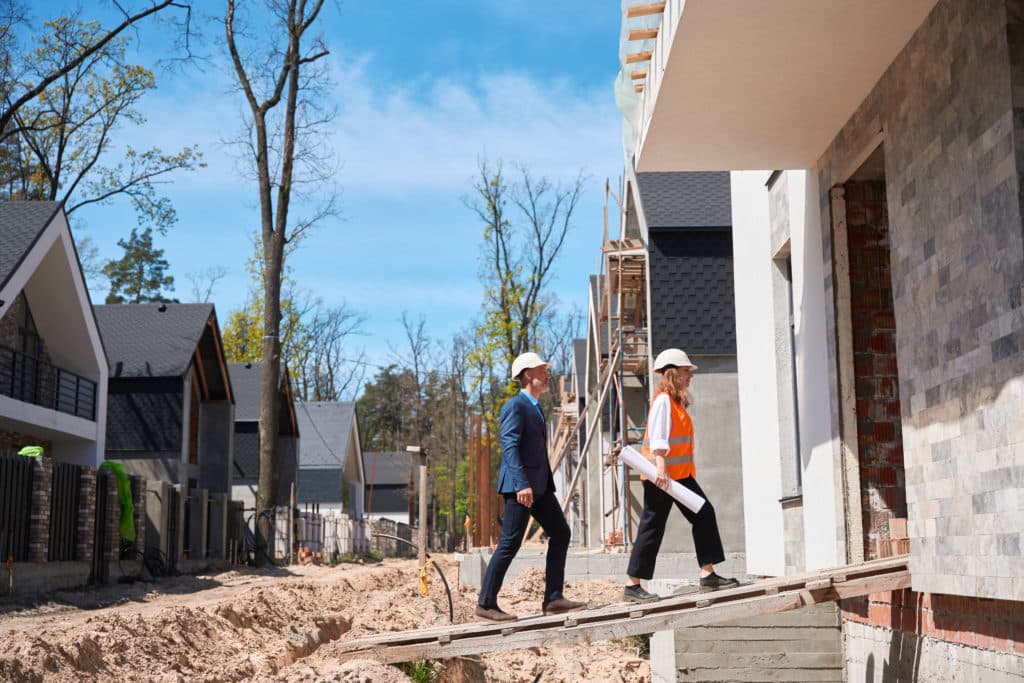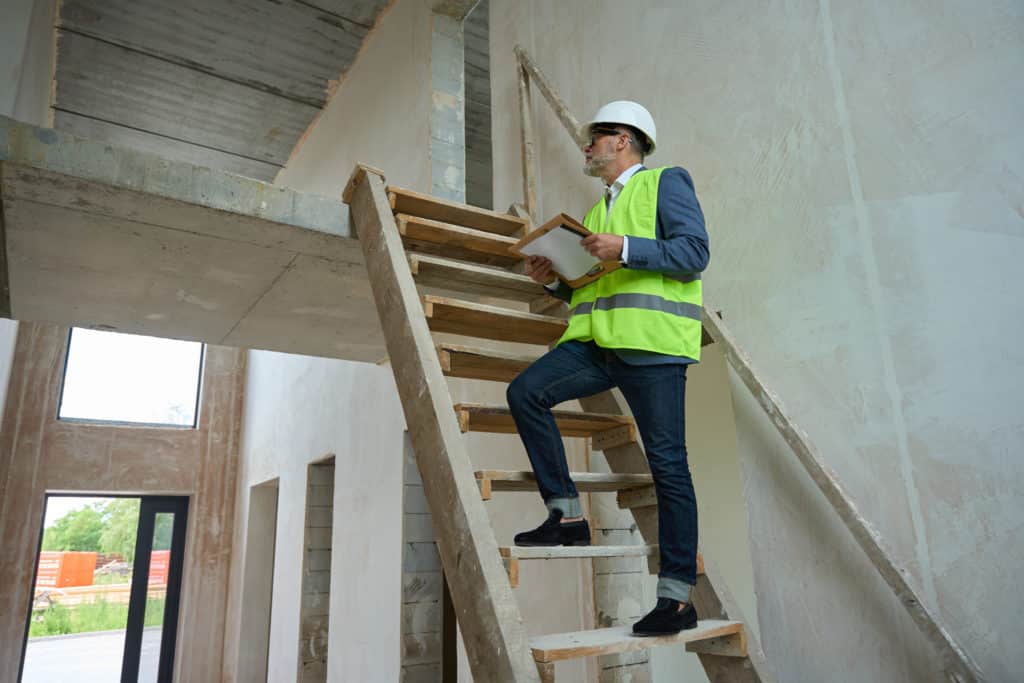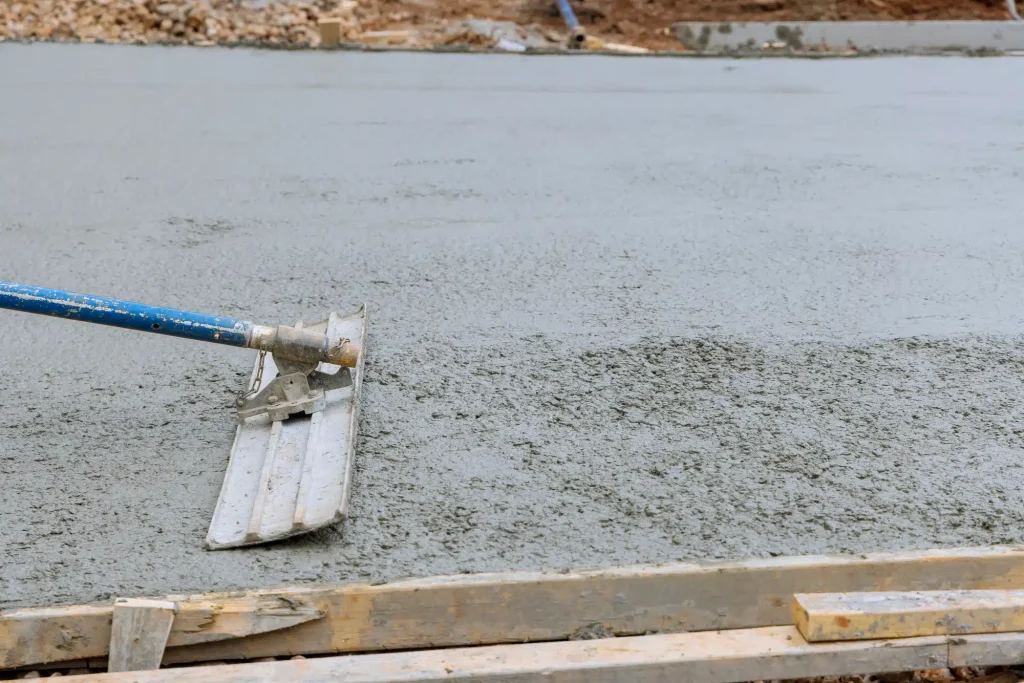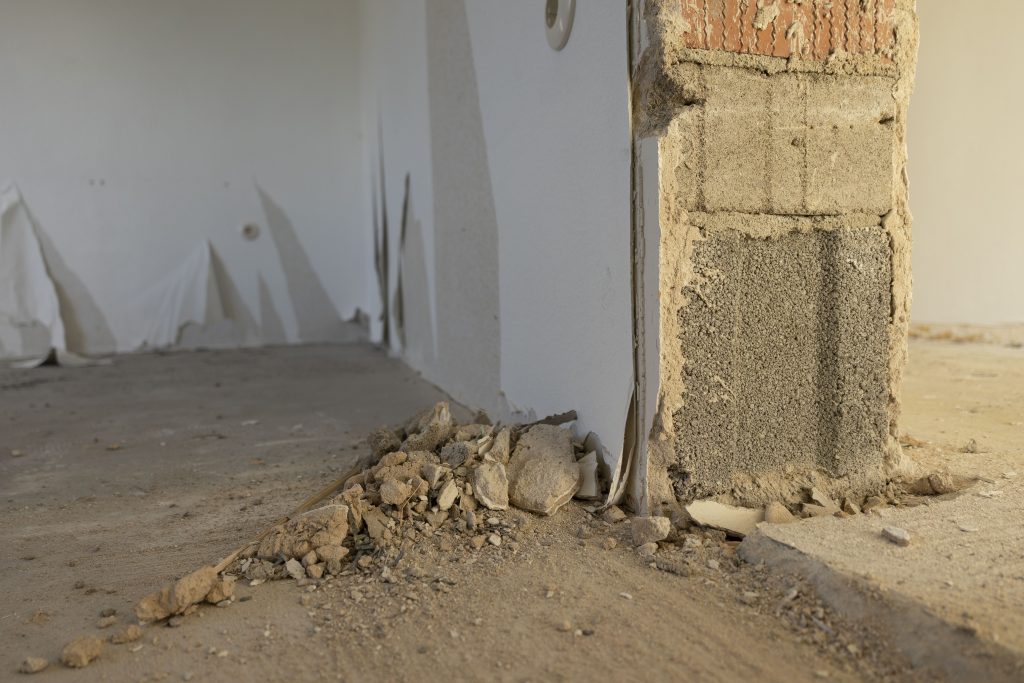Repairing concrete steps is an essential aspect of maintaining the safety and visual appeal of homes and buildings. The deterioration of concrete steps can be due to a variety of factors such as weathering, structural damage, or just wear and tear over time. It’s important for property owners to address these issues promptly as damaged steps can pose a hazard to users and may lead to more costly repairs if left untreated. The cost to repair concrete steps varies widely based on the extent of damage and the type of repair needed. On average, homeowners might expect to pay between $100 and $400 for a standard repair job that takes a few hours.
The repair process may include patching up small cracks, releveling steps that have sunk or shifted, and resurfacing to improve durability and aesthetics. Given the structural importance of concrete steps, hiring a professional for accurate assessment and quality repair work is often recommended. Professionals have the expertise to determine the best approach, whether it be a minor fix or a more comprehensive restoration. Additionally, they will ensure that all repairs meet safety codes and standards, which protects users from potential accidents due to faulty steps.
It’s also beneficial for homeowners to understand factors that influence repair costs. The materials used, labor rates, and the size and condition of the steps all play a part in the overall expense. For example, the national average cost reflects not just the materials but also the labor, with specialists often charging by the hour for their services. Ultimately, investing in the upkeep of concrete steps is a sound decision to preserve property value and user safety.
Assessing Concrete Step Damage

When assessing damage to concrete steps, it is crucial to carefully inspect for common issues and determine whether repair or replacement is the most cost-effective solution.
Identifying Common Issues
Cracks often appear as the first sign of stress in concrete steps. They can range from hairline fissures to larger, more visible splits. Chipped areas are also common, where pieces of the concrete have broken away, often at the edges or corners of the steps. Each of these problems can impact not only the aesthetics but also the structural integrity of the staircase.
Evaluating Repair Versus Replacement
The decision to repair or replace damaged concrete steps should be based on the severity of the damage. Minor cracks might only require a simple filling procedure, whereas widespread chipping and cracking could indicate a deeper structural issue, necessitating complete replacement of the steps. Repair costs can be relatively low for minor issues but can escalate with the complexity of the damage.
Concrete Step Repair Costs

When looking to repair concrete steps, homeowners typically face costs ranging from a minor patch to a complete overhaul. The scale of the work required and the choice of contractor play significant roles in determining the final price point.
Average Cost Ranges
The expense associated with concrete step repair can vary widely. On average, homeowners may spend between $100 and $400 for minor repairs that take about two hours to complete. For extensive work, such as repairing a full set of stairs, costs can escalate to as much as $1,500, highlighting the importance of understanding the scope of the repair project.
Factors Influencing Cost
Several factors influence the final cost of concrete step repair:
- Contractor: Choosing a skilled contractor is crucial, as they typically charge an hourly rate ranging from $100 to $300. Their expertise ensures a cost-effective and durable repair, as seen on Thumbtack.
- Materials: The quality and type of materials used will affect the overall expense. High-quality concrete and reinforcement materials may increase costs but provide better longevity.
- Extent of Damage: Minor cracks might require a simple patch, which can be as low as $20. However, larger issues such as broken steps or structural damage will naturally drive up the repair costs, according to the data from Angi.
- Hourly vs. Flat Rates: Some specialists offer flat rates for repairs, while others charge by the hour. The total time required to fix the steps can impact which option is more cost-effective.
Materials and Tools Needed

When embarking on concrete step repair, selecting the right materials and having the proper tools are crucial for a successful restoration. High-quality materials ensure durability, while the correct tools enable precision and efficiency during the repair process.
Selecting Quality Materials
For any concrete repair, choosing the right mix is vital. Cement is the backbone of the repair compound, known for its strength and compatibility with existing materials. One may also require grout to fill in small cracks and ensure a smooth finish. In cases where the steps have cosmetic damage or discoloration, paint compatible with concrete surfaces can be applied to enhance the appearance after the repair. Ensuring that a bucket is on hand is important for mixing materials to the correct consistency.
| Materials | Description |
|---|---|
| Cement | To create concrete mix for repair |
| Paint | For aesthetic touch-up post-repair |
| Grout | For filling in cracks and crevices |
Essential Tools for DIY Repair
The correct tools are essential to facilitate the repair process. Protective gear such as masks and gloves is important for safety, as concrete work can generate dust and involve harsh materials. A hammer and chisel are indispensable for removing any loose or damaged concrete. A hoe is effective for mixing the concrete, while various trowel sizes help in applying the mix precisely where needed. Finally, for proper application and smoothing of the concrete, a float is used to create a level and professionally finished surface.
| Tools | Use |
|---|---|
| Mask and Gloves | For personal safety and protection |
| Hammer and Chisel | To chip away damaged concrete |
| Hoe | To mix concrete repair materials |
| Trowel | For applying and smoothing the concrete mix |
| Float | To finish the concrete surface evenly |
By utilizing these materials and tools, one can ensure that the repair work not only restores the steps to their original state but also withstands the test of time.
The Repair Process

The concrete step repair process is a meticulous task that involves crucial stages to ensure durability and safety. Accurate preparations, expert concrete application, and meticulous finishing touches are pivotal.
Preparing the Damaged Area
Before any repairs begin, it is vital to clean the damaged area thoroughly to promote the adhesion of new concrete. This includes removing any dust, debris, or loose concrete. One commonly uses a stiff-bristle brush or rag to clear the surface. It is also essential to set up a form around the steps if significant structural repairs are needed, ensuring that the new concrete retains the desired shape as it sets.
Mixing and Applying Concrete
Once the area is prepped, the next step is to mix the concrete repair product according to the manufacturer’s instructions. One must take care to blend the concrete to a consistent texture for optimal results. With the mixture ready, they then apply the concrete to the steps, filling in gaps, cracks, and rebuilding corners and edges as necessary. DIY enthusiasts should apply concrete carefully to prevent air pockets that can weaken the repairs.
Finishing Touches
After application, the new concrete is smoothed and leveled to match the surrounding surfaces. Any excess concrete must be removed before the material begins to set. Once the repairs are shaped and smoothed, allowing sufficient time for curing is paramount. Finally, applying a concrete sealer not only protects the surface from weather and wear but also provides a clean, professional finish. This sealer aids in extending the lifespan of the concrete stair repair, ensuring long-term use and stability.
Professional Considerations
When seeking repairs for uneven or sunken concrete steps, homeowners must consider the importance of securing a professional with the right qualifications and understanding the nuances of local building regulations.
Hiring a Qualified Contractor
A qualified contractor or mason with a proven track record is essential for addressing issues with uneven concrete steps. Homeowners should prioritize credentials and experience to find a professional who can deliver affordable and durable repair work. Here are a few tips to ensure proper hiring:
- Verify credentials: Ensure the contractor has a current license and check for any professional certifications.
- Experience with step repair: Look for a contractor who specializes in fixing concrete steps and can handle both resurfacing and leveling work.
Understanding Building Codes and Permits
Building codes and permits are in place to ensure that any construction work, including repairs, meets safety standards. Here’s what homeowners need to keep in mind:
- Local regulations: Familiarize yourself with local codes which may affect the repair and installation of steps and railings.
- Permit requirements: Check if a permit is needed before starting repair work, as this can vary by location and the scope of the project.
Selecting a contractor who is well-versed with these regulations will not only ensure compliance but also help avoid potential legal and safety issues.

 CALL US NOW
CALL US NOW



